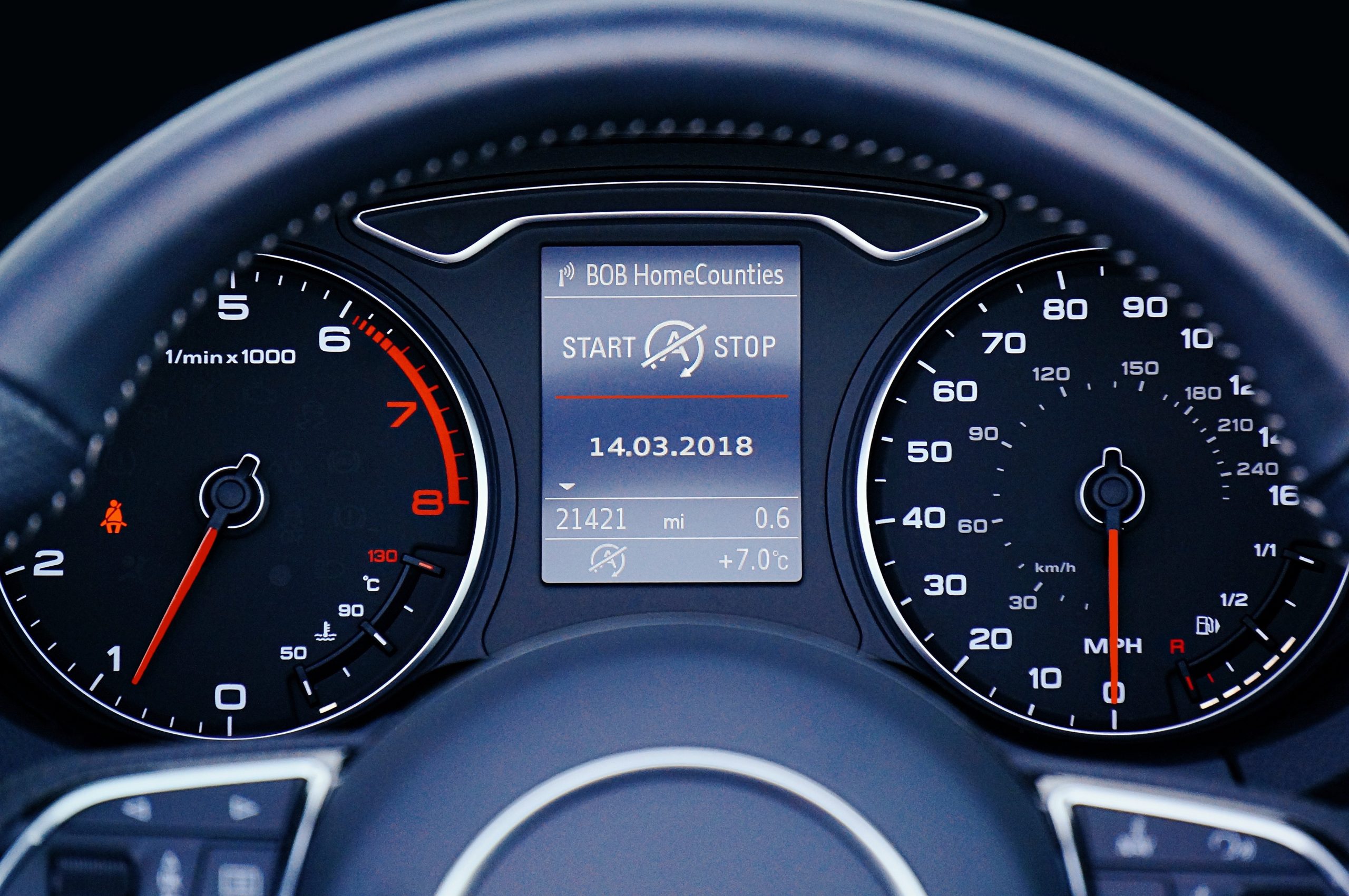Cash-Based Financial Models
Your profit and loss statement (P&L or your income statement) can only show one view of your company’s financial picture. And this is often the view many people tend to use when forecasting their cash flow. However, it is dangerous to only consider this one view for sophisticated financial forecasting! If you’re a cash-based business, this may represent your business well enough, but if you’re not a cash-based business your forecasted financial statements will not provide an accurate picture of reality resulting in, heaven forbid, running out of cash without even realizing it.
At the very least your business will have accounts receivable (AR) and accounts payable (AP) that will need to be represented. But there is no way to recognize this information (and the impact on cash flow in your business) solely on an income statement since revenue and expenses are recognized at different times than when cash comes into or goes out of your business. AND don’t even get me started on all the other types of accruals that happen to account for transactions like prepaid revenue, prepaid expenses, deferred revenue, and deferred expenses, etc.
This is a very long-winded explanation to say that a 3-statement financial model (not a cash basis model) is absolutely necessary to build an accurate representation of your company’s financial health.
What is a 3-Statement Financial Model?
A 3-statement financial model takes the foundational financial statements of every company, the income statement, the balance sheet, and the cash flow statement, and integrates them into one dynamically connected financial forecast. Though there are more simplified financial models that use only one of these statements (your Profit & Loss / Income Statement), they often misrepresent the full financial picture of your company. The core result of using a full 3-statement financial model is that you will be able to conduct scenario planning and see an accurate picture of how changing your business model will not only impact your income statement and balance sheet but most importantly how that will impact your cash flow.
How Do You Build a 3-Statement Financial Model?
As you can imagine when building a three statement financial forecast quite a lot of data and a number of assumptions are required for the model to function properly. For example, you can expect to consider information like the following:
- Income Statement
- Forecasting Revenue and COGS: For forecasting revenue, this could include anything from the volume of contracts closed, products and subscriptions sold as well as the price of those products/subscriptions to Cost of Goods Sold (COGS – the cost to deliver your product/service).
- Forecasting OPEX: In addition, operating expenses (OPEX) such as staff salaries, research, and development (R&D) or sales and marketing (S&M) expenses. All of these assumptions drive your net income (bottom line) that flows into your balance sheet.
- Balance Sheet
- Opening Balances: Any financial forecast worth its weight in gold needs to know the amount of assets, liabilities, and shareholder equity to start with. These are crucial inputs for a good financial model to function correctly and are called opening balances.
- Forecasting Assets: A good model also needs to know how to forecast your assets such as accounts receivable (AR) or your capital expenditure (CAPEX) plan, i.e. what you intend to own in the future.
- Forecasting Liabilities: Who do you owe money to and when will this fall due? Are you intending to capitalize on your business with debt? I think you’ll agree that knowing your liabilities is crucial to avoiding nasty surprises down the road that will have a significant impact on your cash reserves. This could be anything from lines of credit to term loans and convertible notes.
- Forecasting Equity: Are you intending to raise capital via equity through internal or external sources? If so, don’t miss out on forecasting this core component in your financial forecast.
- Cash Flow Statement
- Forecasting Cash Flow: To those who already know, well done, to those that don’t, this is actually a trick section. There are NO assumptions needed to generate a cash flow statement! This may seem bizarre, but please note, the cash flow statement is entirely driven by what happens on the income statement and the balance sheet. This is why the balance sheet is so important in any forecasting process – without it you are not only showing an inaccurate financial picture but also not forecasting cash flow accurately.
The volume of data outlined above may sound a little daunting, but there is no need to start from scratch when pulling together your financial model, you can use a pre-built template like the one used in our Fill-in-The-Blanks Financial Modeling course to guide you and simplify the process.
How Can You Use a 3-Statement Financial Model?
Let’s take a quick step back to look at the bigger picture. The practice of accounting allows us to manage and understand a company through its historical data which we can then use to make evidence-based decisions on how to move forward. Then when you take those financial statements and build on them by developing a financial model you can explore how your company could perform in the future based on a variety of factors and assumptions which will further inform your decision-making process by helping you see how you can tweak and change your business to create the most desirable outcomes (i.e. a certain number of sales, profitability, etc.).
This tinkering with the model to forecast future outcomes is done through scenario analysis and sensitivity analysis, which we’ve described in more detail below.
Scenario Planning
As we’ve mentioned above one of the major benefits of building a 3-statement model is to use it to forecast how changes to operations, your finances, and internal investments impact the big picture of your business. These changes can include anything from “how does hiring another salesperson impact our bottom line?” to “what does our profitability look like amidst a recession?”
When analyzing scenarios typically you will start with a base case scenario which is your average scenario or the present scenario of your business with all variables kept the same. Then you can look at the worst-case scenarios (the most severe outcome) and the best-case scenarios (the ideal outcome).
Why Test Scenarios?
There are numerous benefits to scenario planning and it can be used to support various stakeholders in your business. You might use it internally to determine how much your business would scale if you buy another production machine, while an investor might use it to understand their potential for returns given various investment scenarios.
Overall, we think scenario planning is a useful tool to get to know your business on a deeper level. The more you understand what can go wrong AND what can go right the more effectively and proactively you can plan for any scenario that occurs.
Sensitivity Analysis
Similar to scenario planning but a little more nuanced, sensitivity analysis focuses on a single output to see how changes to only 1 or 2 inputs (instead of a whole scenario’s worth of inputs) impacts that one output. Often, scenario planning and sensitivity analysis are used in conjunction with one another to further the model users’ understanding of possible outcomes.
Make Sure You Have the Full Picture
In our introduction, we mentioned that many people pull together an income statement and think they can forecast cash flow from there but they forget about the balance sheet and how that impacts their cash forecast. The balance sheet determines your company’s financial health and without one there is no way to know what your future financial health is going to be.
For example, a simple P&L statement is not going to tell anybody (from financial management to your investors and advisors) how much debt (liabilities) your company has and if your debt is worth considerably more than the amount of assets your company has. So if you use your P&L to forecast your cash flow then the view of your company’s financial health that you’re going to get will be incomplete, and frankly inaccurate.
Think of it as only taking into account half of your car’s dashboard to manage your driving. If you’re only looking at your tachometer you won’t know if you need to slow down, speed up or stay the course. Similarly, if you’re only viewing your speedometer, then you will know if you should speed up or slow down but not how you can impact your car’s performance or fuel-efficiency.
What Can You Learn from a 3-Statement Financial Model?
So far we’ve spoken mostly in hypotheticals so let’s look at some specific examples of what you can learn from a 3-statement financial model like the one used in our Fill-in-the-Blanks Financial Modeling course.
Example 1: Understanding Your Working Capital
It is difficult to know what your company needs to concentrate on unless you have a financial model that can be easily modified for its core variables. For example, as your business scales, do you really understand how your AR and AP terms will impact your cash flow? Until you’re using a financial model that incorporates both the P&L AND the balance sheet then your model will not be sophisticated enough to forecast your AR and AP terms and for you to run multiple scenarios to determine the ideal terms for a growing company.
Example 2: Deferred Revenue
Let’s assume you have a subscription-based business where customers have the option to pay for your services upfront for either a year or 6 months. Without a 3-statement financial model, you will have no way to forecast customer prepayments or to correctly capture GAAP-based revenue. So the chances will be exceptionally high that your model is going to either misreport revenue or cash flow for your business or both. That is a recipe for disaster! What if you were presenting this information to investors and they ask a question about forecasting deferred revenue, it would be embarrassing if you aren’t able to get this right (and thus achieve capital investments you deserve and need).
Example 3: Convertible Notes
For our next example, you’ve raised reasonably significant amounts of capital through convertible notes in the past (#wahoo). When you receive the convertible note you will have a liability that a cash basis model simply can’t account for. Further still, not only do you have the liability to account for but you also now have an interest-based expense that should sit on your income statement. The interest is yet another variable your cash basis model can’t account for. Therefore, in this example, you have liabilities in the way of debt (the convertible note) and interest (accrued interest and interest expense on the note) that are unaccounted for which means in a cash basis model you would be overinflating your profitability.
Example 4: Depreciation
Imagine you own a company that requires a lot of machinery to run its business operations, if you don’t use a 3-statement financial model to develop your financial projections then you will again be painting an entirely inaccurate picture of your profitability. Now, why is this I hear you ask? When you own an asset, in this example a piece of machinery, the value of that asset decreases over its lifetime. This depreciation of the value of the machinery will sit on your income statement as a depreciation expense. In a cash basis financial model, the chances are that the cost of this machinery would be listed as a one-time expense on your income statement resulting in wild swings in profitability to simply record the cash outflow of buying the machine. Ugly, right?
To more accurately represent the value, the cost of the machinery would be “depreciated” over its lifetime. So if the machine costs $1,200 and the machine’s lifetime is one year, then $100 per month would be listed as a depreciation expense on the income statement and this $100 would be moved from the assets on the balance sheet via an account called “accumulated depreciation” (eventually reducing the asset to $0 on the balance sheet after one year). Without the incorporation of the balance sheet into your model, you’re highly likely to be misreporting your profitability and showing inaccurate cash flow, both of which would be devastating if you use this information to make business decisions. 
Custom Eyeglasses Are the Only Way
We love analogies so one more for the road! Using a cash basis financial model is like buying off the shelf eyeglasses. They might allow you to see a little bit better, but they don’t provide a fully clear picture or give you your ideal vision. A 3-statement financial model is like buying custom made eyeglasses with your exact prescription lenses – they will give you the full and accurate picture of your business.
Now I know gathering all of the input information and developing the assumptions you need to build your own financial model from scratch may seem like a momentous task, but our goal with this article was not to scare you! In fact, we want to help you understand how truly valuable a 3-statement financial model can be so that you don’t make the mistake of forecasting your business’s financials with a cash basis model thinking it will give you everything you need to make sound business decisions.
We also want to clue you in to a MUCH easier way to build a financial model for your business without any potential headaches. Since we love to make the lives of business owners simpler, we developed the Simple Startup Academy including our Fill-in-the-Blanks Financial Modeling course which makes it super simple to build (and continually update) a 3-statement financial model customized to your business.





